Highworth and Swindon, Wiltshire
Up to 1834
A parliamentary report of 1777 recorded parish workhouses in operation at Highworth (for up to 38 inmates) and at Stratton St Margaret (20 inmates).
A new Highworth parish workhouse was built in 1790 on Cricklade Road at a cost of £1,900. The building, now known as Westhill House, was later used as a vicarage and has now been converted to residential use.
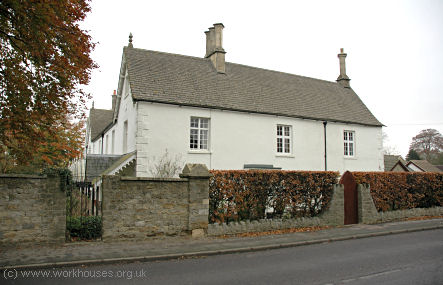
Highworth former parish workhouse, 2005.
© Peter Higginbotham.
After 1834
Highworth and Swindon Poor Law Union (renamed Swindon and Highworth in 1895) officially came into existence on 23rd November 1835. Its operation was overseen by an elected Board of Guardians, 21 in number, representing its 16 constituent parishes as listed below (figures in brackets indicate numbers of Guardians if more than one):
County of Wiltshire:
Bishopstone, Blunsdon St Andrew, Castle Eaton, Chiseldon (2), Draycot Foliat, Hannington,
Highworth (3), Hinton Parva, Inglesham, Lyddington [Liddington], Rodbourne Cheney, Stanton Fitzwarren, Stratton St Margaret, Swindon (2), Wanborough, Wroughton (2).
Later Additions: Haydon Wick (from 1929), South Marston (from 1894).
The population falling within the Union at the 1831 census had been 12,611 — with parishes ranging in size from Draycot Foliat (population 19) to Highworth (3,127). The average annual poor-rate expenditure for the period 1833-5 had been £11,387 or 18s.1d. per head of the population.
The Highworth and Swindon Union initially contained to make use of the existing Highworth parish workhouse. The poor Law Commissioners approved and expenditure of £850 on alteration and enlargement of the building to comply with the requirements of the 1834 Poor Law Amendment Act. It had a capacity of no more than 80 inmates.
The increasing demands on places in the workhouse led to the construction, in 1845-6, of a new building in Stratton St Margaret, at the east side of the Highworth Road.
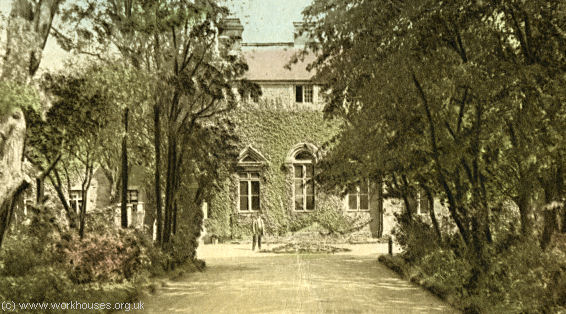
Highworth and Swindon from the west, c.1910.
© Peter Higginbotham.
The T-shaped main building accommodated male inmates at the north and females at the south. The dining-hall and kitchens were located in the centre rear wing. The original infirmary block lay at the east. The site location and layout are shown on the 1889 map below.
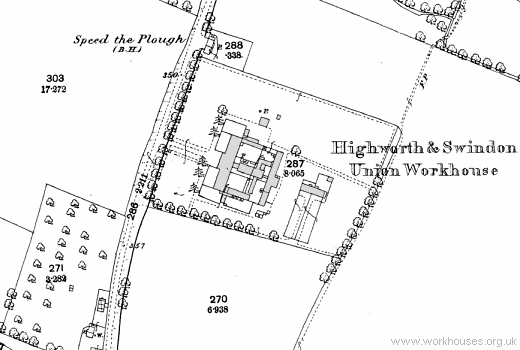
Highworth and Swindon site, 1889.
The layout of the main building is shown on the plan below which dates from 1930.
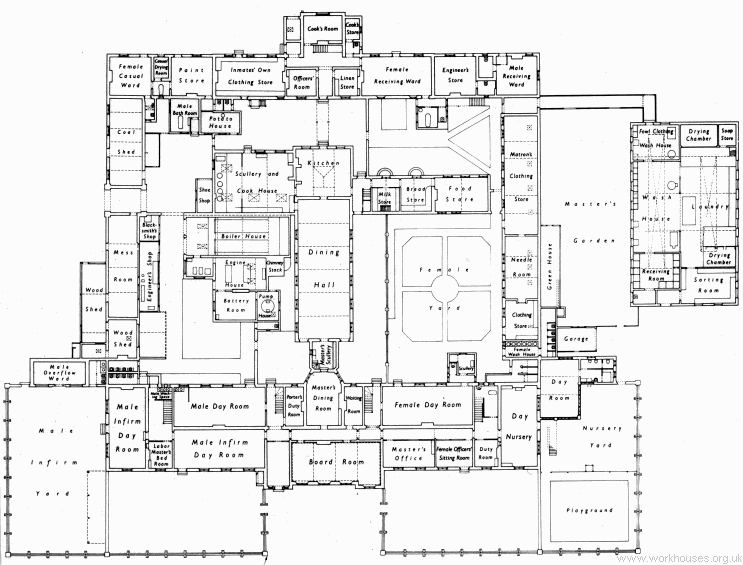
Highworth and Swindon site, 1930.
A new infirmary was erected at the east of the workhouse in 1900. It comprised a central administrative block with separate male and female pavilions to the north and south.
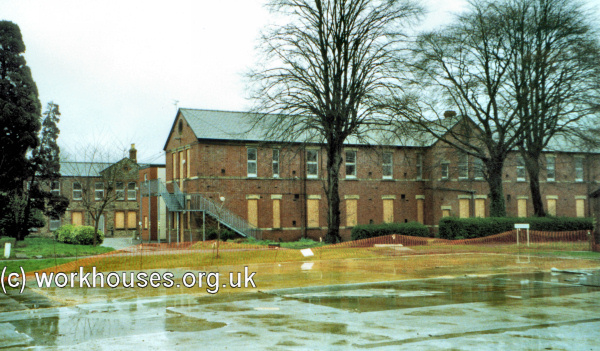
Highworth and Swindon 1900 infirmary from the south, 2000.
© Peter Higginbotham.
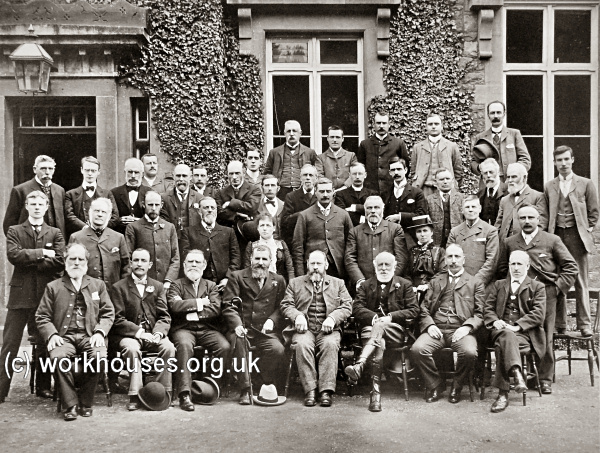
Highworth and Swindon Board of Guardians, 1902.
© Peter Higginbotham.
From 1904, to protect them from disadvantage in later life, the birth certificates for those born in the workhouse gave its address just as 8 Highworth Road, Stratton St Margaret.
After 1930, the former workhouse became a Public Assistance Institution, with the infirmary being used as a general hospital. Five Emergency Medical Scheme wards were erected at the south of the site in 1940. The site layout at this date is shown on the 1941 map below.
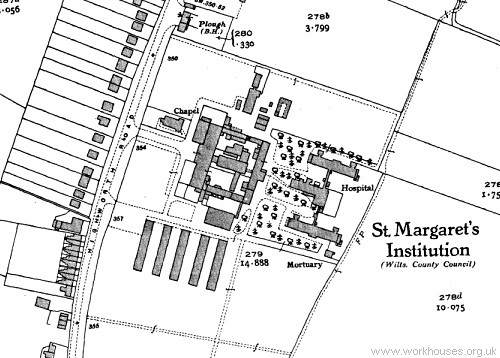
St Margaret's site, 1941.
After the inauguration of the National Health Service in 1948, the site became St Margaret's Hospital and continued in operation until the 1990s. The main workhouse building was demolished in around 1990 but the 1900 infirmary wings survived for another dozen years. The site has now been completely redeveloped for residential use.
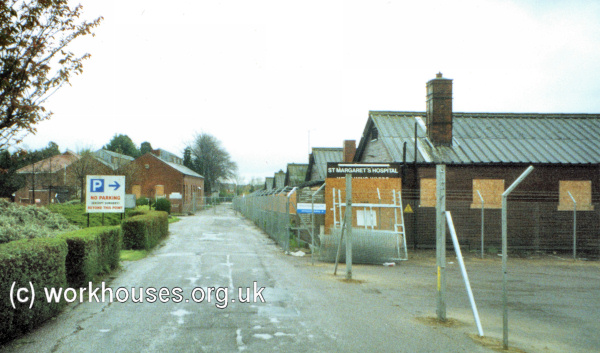
St Margaret's site entrance from the west, 2000.
© Peter Higginbotham.
Scattered Homes
The Swindon and Highworth Union established several children's scattered homes. In 1924, these were at 2 The Villas, Stratton (33 children); The Limes, Stratton (36 children); and Olive House, 11 Prospect Place, Swindon (16 children).
Staff
Inmates
Records
Note: many repositories impose a closure period of up to 100 years for records identifying individuals. Before travelling a long distance, always check that the records you want to consult will be available.
- Wiltshire and Swindon Archives, Wiltshire and Swindon History Centre, Cocklebury Road, Chippenham SN15 3QN. Very few records survive — holdings include: Guardians' minutes (1835-8, 1842-1930); Admissions and discharges (1899-1911, 1914-23); Births (1866-1914); Deaths (1899-1911, 1914-23, 1925); etc.
Bibliography
- Ockwell, Caroline & Carter, Graham (2014) In the Shadow of the Workhouse
Links
- None.
Unless otherwise indicated, this page () is copyright Peter Higginbotham. Contents may not be reproduced without permission.


